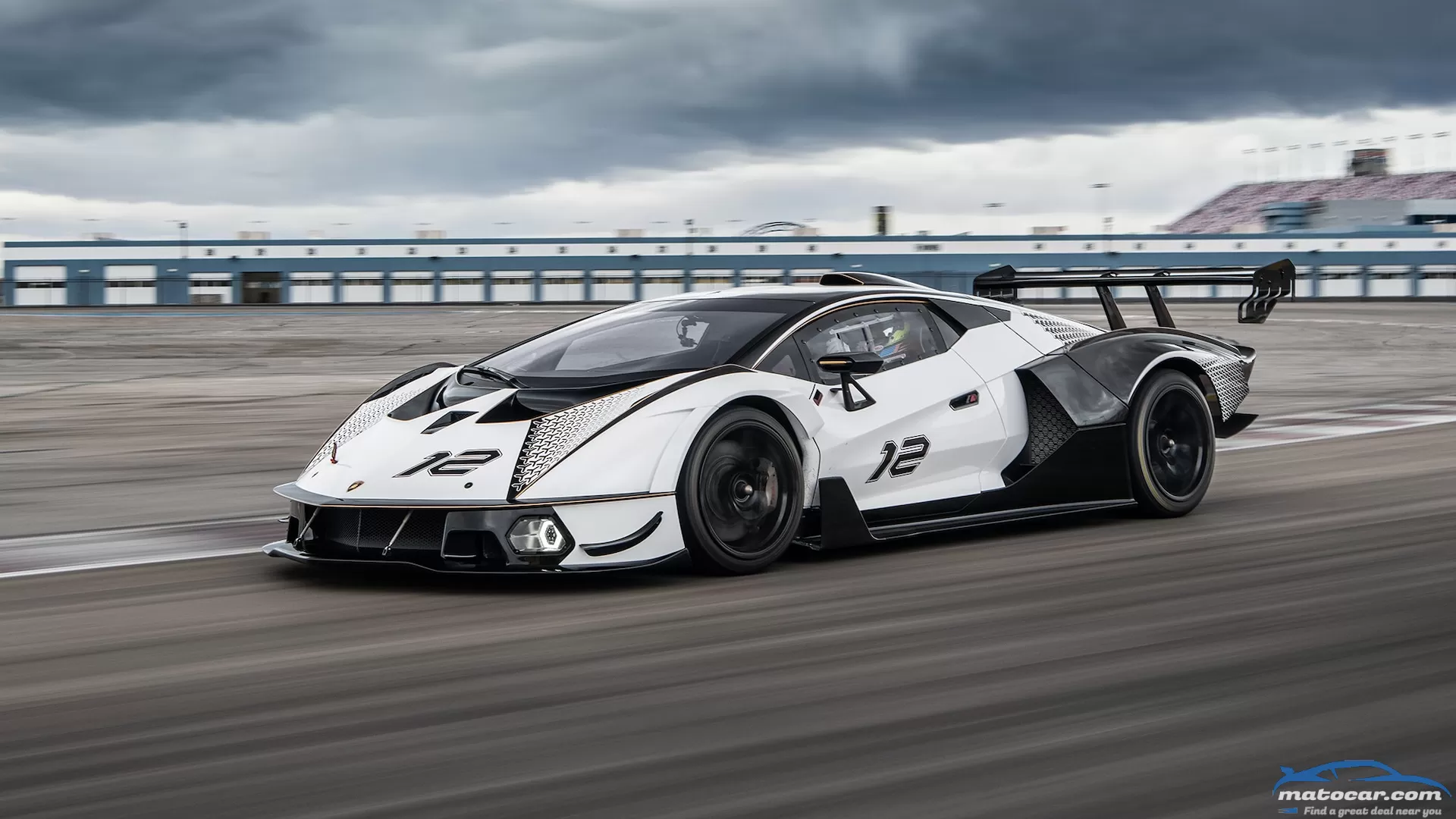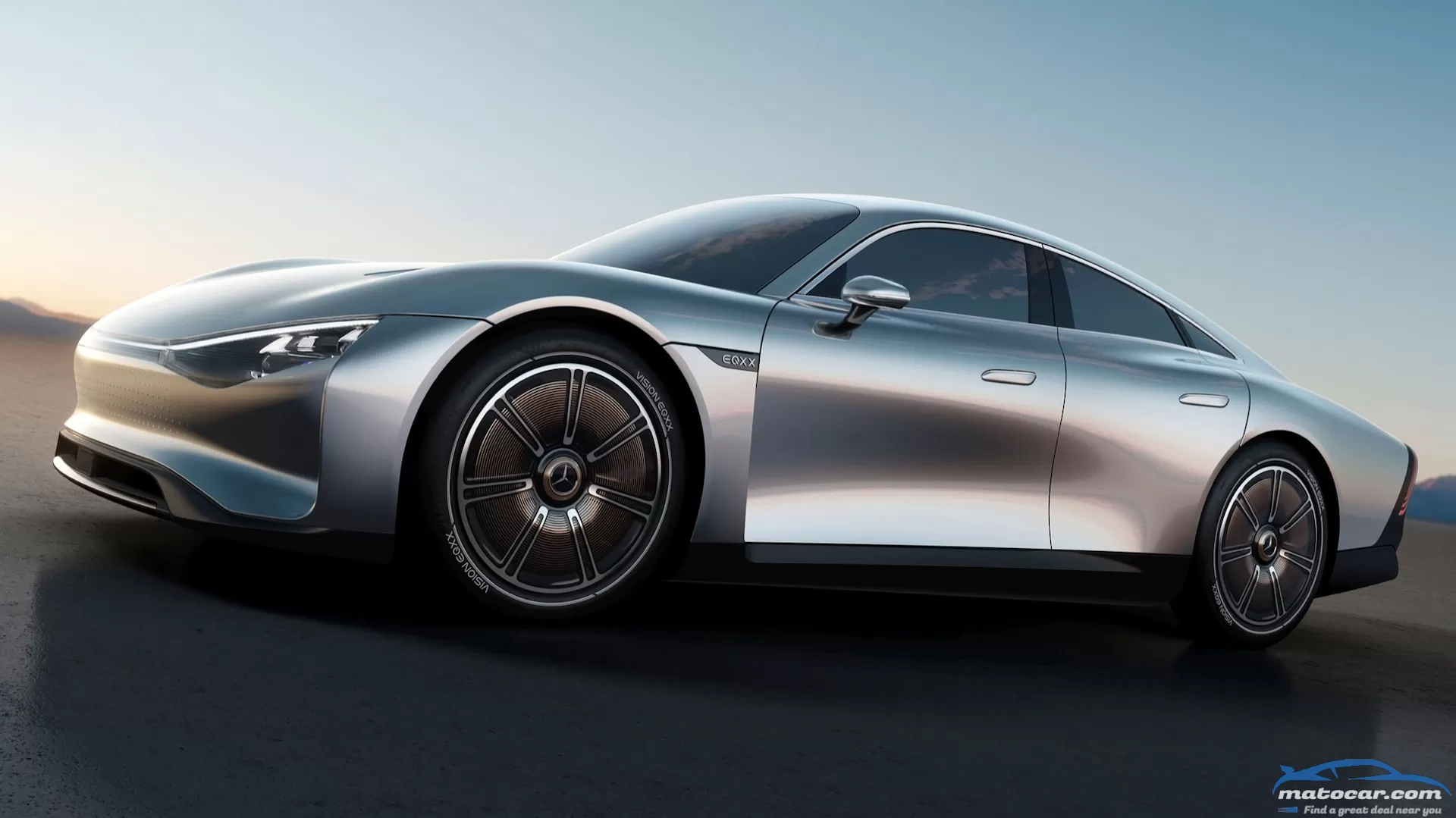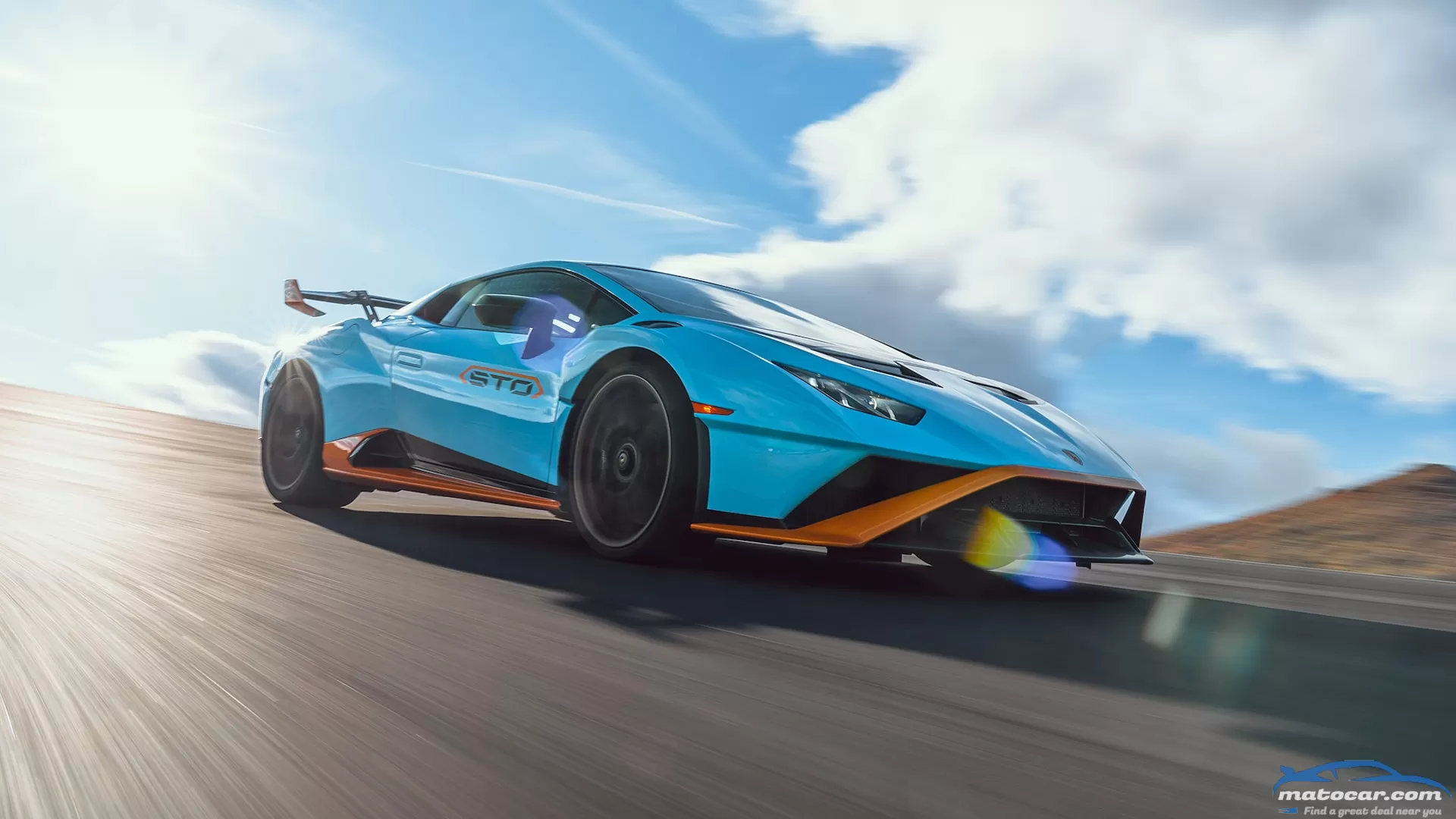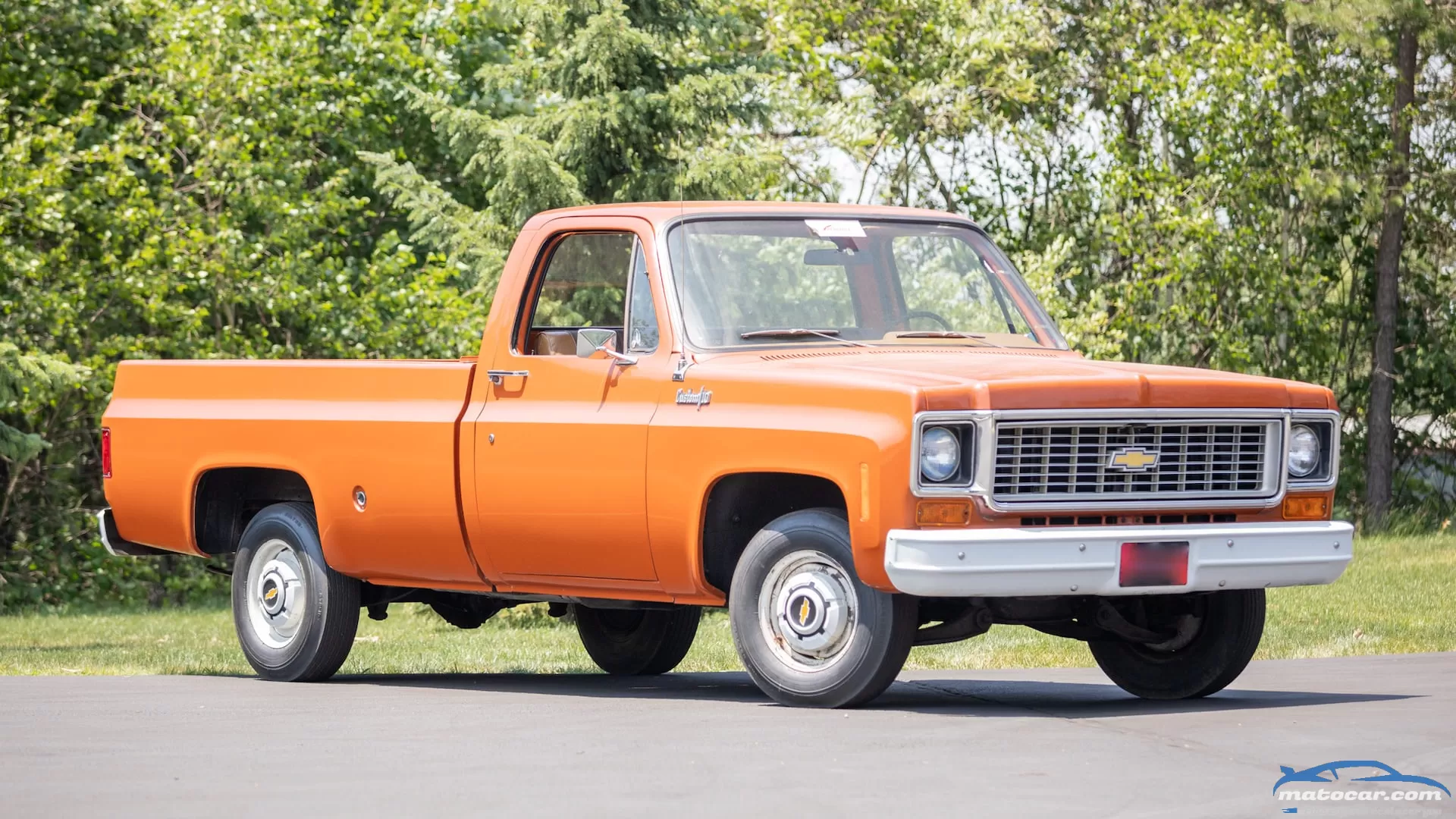Lamborghini Essenza SCV12 First Drive: A $2.5 Million Screaming Good Time

Modern-day Lamborghini has a habit of milking the underpinnings of its series-production cars for all they're worth in the shape of rebodied and somewhat mechanically upgraded (to varying degrees) ultra-limited editions. If you're unfamiliar, see examples named Reventón, Centenario, and Veneno, for starters, and the most recently controversial and maligned Countach LPI 8004. So it's not terribly difficult to sometimes take a cynic's view that says the company relishes finding relatively easy ways to convince its richest clients to tap further into their hedge funds or throwaway crypto profits rather than developing truly new machines—you know, the type of series-production cars we might decades from now remember just as vividly as we do the revolutionary ones Lamborghini earned its reputation on in the first place. So we were thrilled to discover after a recent drive of the Lamborghini Essenza SCV12 that this offering occupies a different strand on the company's genetic spider graph.
What Is the Essenza, Anyway?
The Lamborghini Essenza SCV12 is indeed another limited toy for car-crazy moguls, and it carried a starting price of 2.2 million euros. "Carried," because Lamborghini already sold all 40 of them. For the record, U.S. buyers paid whatever the dollar-to-euro exchange rate was on the day of their transaction; at this moment, the price would be nearly $2.5 million if you could still get one from the factory.
The "SC" in the Essenza's name stands for "Squadra Corsa," which is the Italian manufacturer's motorsport division. ("Essenza" translates to "Essence" in English.) Squadra Corsa is responsible for developing Lamborghini's GT3 race cars, as well as running the Super Trofeo one-make series that exclusively features Huracán Super Trofeo Evo race cars competing in 50-minute sprint races. Like those Huracáns, the Essenza SCV12 isn't street legal, making it a hugely expensive track-only car aimed at wealthy gentleman racers, track-driving enthusiasts, and gotta-have-everything collectors.
Other than the car, the purchase price includes two years of storage at Squadra Corsa's facility in Sant'Agata Bolognese, Italy, with oversight from technicians and 24-hour-a-day video surveillance for owners to look in on their cars whenever desire or paranoia takes hold. One bright spot: Unlike Ferrari and its FXX-K, for example, Lamborghini will allow Essenza owners to take their cars home or wherever they desire, rather than making it such an ordeal owners just leave their cars at the factory.
Squadra Corsa does organize and support several arrive-and-drive outings per year at circuits around the world; simply show up, and your baby is there, prepped and waiting to rip. The 2022 schedule features 11 dates between February and December, with stops at famous U.S. road courses including Laguna Seca and Watkins Glen, and contemporary Formula 1 venues Barcelona and Abu Dhabi. Essenza SCV12 owners also get track time during Lamborghini's annual Super Trofeo World Finals event, scheduled in 2022 for early November at Portugal's Portimão circuit. The World Finals entry and accommodations are included in the car's purchase price for three years; other events carry additional entry fees plus the cost of consumables such as tires, fuel, brakes, etc. Lamborghini offers participants driver coaching from its stable of pros, though all Essenza lapping sessions are conducted in a track-day format, without actual racing.
Owners also pay extra for any private track time they wish for themselves; the bill depends on the scope of the program but typically falls in the $50,000-$100,00-plus range. Another bright spot: You'll write the check, but one call to Squadra Corsa's concierge yields a proposed itinerary within 48 hours, covering everything you want to do on- and off-track, plus track rental, car shipping (if necessary, including overseas), meals, and anything else you need.
Notable Chassis Construction
Here's where the Lamborghini Essenza SCV12 gets good: This car is a long way from simply being a rebodied and retuned production model. It's effectively a purpose-built race car, though it isn't homologated for competition in any actual racing series. But that was the point: to build a track car unrestricted by the typical performance-limiting rules that govern global GT racing.
Lamborghini did, however, pay big attention to safety, working with the FIA—the governing body of international motorsports—to develop the Essenza's safety technology beyond what GT rules require today. In that sense it's a bit of a rolling laboratory, a GT-style race car with a carbon-fiber monocoque chassis built to existing Le Mans Prototype safety standards. But where typical GT race cars use a steel roll cage, the SCV12's carbon cage is integrated within the monocoque structure, a solution you'll see down the road on actual racing-homologated GT contenders.
Whereas the Essenza's carbon chassis is based on that of the Lamborghini Aventador, only the lower part of the monocoque is similar, the company says, with 60 percent of the chassis redesigned to hit the safety targets and comply with FIA standards. The front and rear frames, suspension, gearbox, and electronics were developed specifically for this car.
What's It Like to Drive?
Lamborghini let us behind the Essenza SCV12's Formula 1-style wheel for 16 laps of Las Vegas Motor Speedway's 1.1-mile road-course configuration. The nine-turn circuit is more club track than proper race course; most of it is taken in second or third gear, but the front straight allowed for an extra gear or two and speeds in the 140-mph ballpark before a reasonably challenging-to-nail heavy braking zone for the second gear Turn 1 lefthander. The venue, and the fact Lamborghini let us run whatever pace we wanted, was enough to demonstrate the Essenza's intriguing package of thrills combined with approachability for non-pro drivers.
You get a kick out of the experience before you're even out of pit lane. Strapped into the five-point harness, the starting procedure is simple but fun, especially for motorsports enthusiasts: Flip on the master switch and briefly let the electronics boot up, then push the ignition button followed by the start button. Once the 6.5-liter V-12 thumps alive, hold the car on the brakes (left foot preferred), punch and hold the blue button on the steering wheel for neutral, and click the right-hand shift paddle once for first gear in the Xtrac-built six-speed sequential manual racing 'box. Foot off the brake, hit the throttle, and the automated clutch (there is no pedal) engages, and you're off.
You bounce around as you trundle down pit lane, typical race-car behavior thanks to a limited-travel pushrod suspension that doesn't like painfully slow driving. The rear suspension is mounted straight to the gearbox, which serves as a stressed structural chassis element (common race-car architecture that's rare in production vehicles).
Kill the pit-speed limiter by clicking a button on the wheel, and bam! The Essenza howls like only a naturally aspirated Italian V-12 does, noises exaggerated by the SCV12's unique and unrestricted Capristo exhaust system. The engine is the same as the Aventador's, but thanks to a less restrictive exhaust, a bespoke air-intake system that makes use of ram effect via the engine-feeding roof scoop, and a Motech motorsports ECU, it produces 820 hp at 8,500 rpm and 568 lb-ft at 6,000. That's a 60-hp and 37-lb-ft increase compared to the stonking Aventador SVJ road car. Gulp.
But within a few laps, even once we turned the power all the way up—a mode switch on the wheel offers five settings beginning at 695 hp and ramping up in 25-hp increments with each click of the dial—the nuclear straight-line speed isn't what got us. Rather, with bespoke Pirelli slick tires and monster downforce from the aero package, the car's grip and handling have you shaking your head and giggling even on a slow track like the one we drove. For perspective, Lamborghini claims 2,645 pounds of downforce at 155 mph, with even more at higher speeds; that exceeds the downforce of a true GT3 race car. It's darn near almost enough to theoretically allow the car to drive upside down without falling off the ceiling, if the track allowed it.
The LVMS road course didn't let us get near what the Essenza's aero and tire package can really do, but we still felt the massive grip, especially through a flat-out third-gear kink toward the end of the lap, and also in how late we could brake into Turn 1. (The steel brakes are by Brembo, with carbon-ceramics also available.) Braking-marker boards on the side of the front straight served as guides; Lamborghini pro drivers present during our test drive suggested braking at the third board from the end as we learned the car, and then suggested working our way down to braking between it and the second board. But after a few laps of feeling what the car was capable of and finding our confidence buoyed, we rocked the Essenza down the front straight past the third board, past the halfway point, and nearly all the way to the second marker before crushing the pedal.
Holy Ferruccio, did it ever work. The brake pedal feels softer than you might expect in its first bit of travel then firms up significantly and provides outstanding modulation and control. There are no latency issues with the pedal, and that fact allowed us to bleed massive speed immediately, then remain easily in control as the back end wobbled before gripping back up through the middle of the braking zone. Finally, downshifts completed with a few satisfyingly solid clicks of the left-hand paddle, we trailed off the pedal at the turn-in point and the Essenza dug in, nailed the apex, and tracked out the other side with what we swear was a yawn. We're convinced we could have gone another 20 feet deeper into the braking zone—and we also weren't stupid enough to try it. But the fact we believe it after such a brief experience of the Essenza SCV12 says a lot about how much confidence the car inspires. We didn't bother recording lap times on this day, but Lamborghini told us the Essenza is some 3 to 4 seconds quicker than the Huracán GT3 race car around medium-to-high-speed tracks in the hands of pro drivers, despite it weighing a few hundred pounds more. We have little doubt this is accurate.
Odds and Ends
The car's overall setup during our drive was tuned toward understeer just to keep things manageable for the amateur drivers Lamborghini invited to sample it, but there's a huge amount of adjustability in the Essenza. Even with this setup, we discovered we could rotate the chassis somewhat into the corners using the brakes and then confidently go to the power. One thing for drivers to keep in mind is that this is a heavier, long-wheelbase (114.4 inches) car compared to most racing models, so it's a bit more deliberate, relatively speaking, in its responses to inputs. Some people might even initially find it counterintuitive if they get into it with only the eye-catching power and torque specs in mind while expecting the knife-edge, snappy reactions of a car boasting a smaller footprint.
With more time, we would have found a slightly more comfortable position for the steering wheel, which, just like the pedals, is easily and quickly adjustable to accommodate a range of driver sizes and preferences, and we disliked the screen mounted in the center of the roof above the dash. The latter is for displaying data to technicians after on-track sessions, but its location impedes your field of view somewhat when you try to look ahead through corners like you should always do. To its credit, Lamborghini says it has heard the same comment from some owners and is working on a better solution.
Our biggest gripe, though, is we didn't have time to run another 50 laps. Not only for fun and to increase our speed and adapt ourselves more to what the car likes, but to also explore deeper into exactly what it can do when you make adjustments. Along with the power/engine map, the trick steering wheel (which we didn't mess with outside of the power settings) allows you to tune the differential, clutch, traction control, ABS, and power steering to your preferences depending on the circuit and the specific corners you're driving. There are also controls for brake bias, throttle behavior, and more. The total package makes for a mighty engaging and pure race car experience, even though this isn't technically a race car. Well, at least not a homologated one you'll ever see in true competition.
In a way, then, you could call the Lamborghini Essenza SCV12 a car without a home, except Lamborghini and Squadra Corsa have created a community around it for the 40 owners who understood the vision and what the Essenza offers. But because of the car's limited numbers and track-only usability, there's a good chance you'll never see one in the wild, let alone running in anger. From that perspective, it's massively tempting to lump it in with those other rare, virtually one-off modern Lamborghinis that have come and gone and are now distant memories mentioned only occasionally by diehard hypercar nerds. And that's a shame, because after driving the Essenza SCV12 as it's made to be driven, we suspect we'll forever remember this one as being in an entirely different league.
Lamborghini Essenza SCV12 BASE PRICE $2,488,357 (est) LAYOUT Mid-engine, RWD, 2-pass, 2-door coupe ENGINE 6.5L/820 hp @ 8,500, 568 lb-ft @ 6,000 DOHC 48-valve V-12 TRANSMISSION 6-speed sequential CURB WEIGHT 3,230 lb (est) WHEELBASE 114.4 in L x W x H NA 0-60 MPH 2.8 sec (est) EPA FUEL ECON NA EPA RANGE (COMB) NA ON SALE Sold out Show AllYou may also like
ProsNear limitless gripQuicker-than-you-can-think responsesBiblical brakes ConsConfusing drive modesNo performance auto-shifting modeNeeds a bigger shift lightIt's not often a car comes along where the only thing you can find to complain about are the names, functions, and number of drive modes, but here we are. The 2021 Lamborghini Huracán STO is so insanely good to drive, we're left with the nittiest nits to pick."You look at the STO and its wings 'n' things," deputy editor Alex Stoklosa said, "then consider that it's shoving a V-10's worth of power to only the rear wheels, and you assume it'll be hairier than a barbershop floor. Not at all. There is so much grip front and rear, and the chassis is so balanced, that it drives nothing like it looks. There is no evil here. Sure, the Lambo hustles in ways most cars don't or can't, but it simply has no vices while furiously raging."You could call it a complaint for lack of others, but the amount of time some judges felt they needed to fully understand the car's limits was a bit longer than usual, simply because the limits are so high you need a telescope to see them. Once you truly understand what it's capable of, though, you never want to stop driving it. On the street, on the track, it doesn't matter.Credit the brilliant blending of adaptive magnetorheological shock absorbers, rear steering, racing brakes, and Bridgestone Potenza Race tires for the STO's direct connection to your brain's pleasure center. The front end changes direction quicker than you can think it while the rear stays behind you no matter the speed unless you very deliberately kick it out. When you do, the car breaks away beautifully, allowing you to ride that slip into the perfect amount of rotation.Mostly, though, it just goes. The damn near race-spec V-10 delivers a perfect progressive powerband that never wallops the rear tires with more torque than they can handle (which is, admittedly, a lot), so you can stand on the throttle leaving every corner, and the STO will grab and go. Get to the next turn, and the brakes require only gentle but deliberate pressure to stop the car like you just grabbed the No. 3 wire on an aircraft carrier's deck.Not just a one-lap pony, the Huracán STO will do it over and over, every corner, every lap, all day long. It's so rewarding and fulfilling to drive, you never want to stop. You can't automatically say these things about every mid-engine supercar with 600-plus hp.About those nits. Some judges found the drive modes confusing, assuming the STO mode would be the most aggressive since it shares the car's name. ("STO" stands for Super Trofeo Omologato, meaning this is the road version of the Huracán Super Trofeo track-only race car.) But STO is actually the "around town" mode, and many felt it was way too docile. Corsa is the mode you want to be in, but keep in mind it's the full race mode with manual-only shifting and reduced stability control. Several judges found themselves wishing for an intermediate mode with lighter steering than Corsa and far more aggressive automatic shifting. But alas, the only other mode is Pioggia, the wet weather mode.Since we're whining, an actual shift light instead of the graphics in the digital instrument cluster would be nice. The engine just revs forever, right until it suddenly doesn't, so you need the upshift indication in Corsa.But again, all you really need to know about how ridiculously awesome this car is to drive is that we can't find anything better to complain about. The Huracán STO is an apex predator at its apex, fully bestowing the thrill of the hunt to anyone who slips behind the wheel.2021 Lamborghini Huracán STO Specifications Base Price/As tested $333,633/$442,033 Power (SAE net) 630 hp @ 8,000 rpm Torque (SAE net) 417 lb-ft @ 6,500 rpm Accel, 0-60 mph 2.8 sec Quarter-mile 10.7 sec @ 132.3 mph Braking, 60-0 mph 95 ft Lateral Acceleration 1.16 g (avg) MT Figure Eight 22.3 sec @ 0.99 g (avg) EPA City/Hwy/Comb 13/18/15 mpg Vehicle Layout Mid-engine, RWD, 2-pass, 2-door coupe Engine, Transmission 5.2L port- and direct-injected DOHC 40-valve 90-degree V-10, 7-speed twin-clutch auto Curb Weight (F/R DIST) 3,390 lb (42/58%) Wheelbase 103.1 in Length x Width x Height 179.0 x 76.6 x 48.0 in On Sale Now Show All
We're not certain exactly who or what started the long-running Chevrolet C10 pickup craze (it very well could have been Truckin', or any one of MotorTrend's former truck-enthusiast magazines), but there's no arguing the fact that today these trucks, produced from 1960 to 1987, are timeless.The latest cool Chevy C10 being brokered at Mecum Auctions' Harrisburg, Pennsylvania, event (and there are several) is this model, slated to cross the block on Saturday, July 30, 2022. Actually, Lot #S123 is beyond being simply cool because, as a 1974, it's an early pioneer of the "Squarebody" era (1973 to 1987), examples of which are today the most coveted C10s of the entire run, in any condition (kind of like an old Mopar muscle car).What you're looking at in these photos is a true survivor; a Custom 10 that somehow has escaped the perils of dilapidation and destruction, as well as the clutches of "builders," customizers, hot-rodders, and modifiers (for now). This Chevy squarebody is 100-percent original, from its Grecian Bronze paint to the Uniroyal tires it was delivered on in 1974. The truck was purchased by a Minnesota farmer who reportedly owned it for a few years, only using it to attend church services on Sundays.Let's get to the images of this timeless classic, which certainly could sell for a king's ransom based on its perfectly preserved condition, highlighted by only 723 original miles. As classic Chevy C10s go, the big question is whether the winning bidder will keep this rig "as is" for a continued eternity, or if it is destined for full customization, and eventually possible resale at a future Mecum auction.Tune in to MotorTrend's exclusive coverage of Mecum's Harrisburg auction. Broadcasts start July 28 at 6:00 p.m on MotorTrend+ and MotorTrend TV.




0 Comments